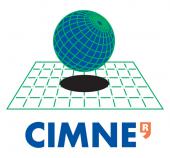Submitted by admin on

The International Centre for Numerical Methods in Engineering is a research organization in Barcelona, Spain. CIMNE was created in 1987 as a Consortium between the Catalan Government (Generalitat de Catalunya) and the Technical University of Catalonia (UPC – Universitat Politècnica de Catalunya). CIMNE is an autonomous RTD centre focusing in promoting and fostering advances in the development and application of numerical methods and computational techniques for the solution of engineering problems in an international context.
The research activities of CIMNE cover the development of innovative constitutive models for composite materials, new numerical methods for non-linear analysis and safety studies of structures, computational fluid dynamics studies and mesh generation and visualization interfaces, stochastic optimization as well as program parallelization and distributed (grid) computing techniques, among others.
CIMNE has developed its own visualization platform GiD, a universal, adaptive and user-friendly pre and postprocessor for numerical simulations in science and engineering. GiD has been designed to cover all the common needs in the numerical simulations field from pre to post-processing: geometrical modelling, effective definition of analysis data, meshing, data transfer to analysis software, as well as visualization.
In the last twenty years, CIMNE has taken part in + 450 RTD projects with over 200 companies and organizations. Some 110 of these projects have received EC support through FP3-FP7. CIMNE has been coordinator of some 30 EC funded projects (including a cluster of projects in the FP5 IST programme).
In VELaSSCo, CIMNE will be the coordinator of the project and build here on its proven experience in managing European research projects. From the scientific point of view, CIMNE will contribute in the WP related to the implementation of the new visualization algorithms into its in-home platform GiD implementing user-friendly interfaces to complex analysis of large simulation outputs.
